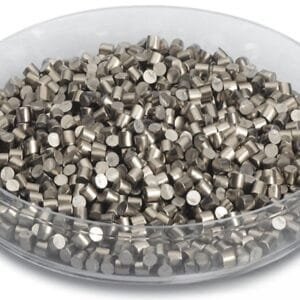Europium Evaporation Materials Description
Europium, a rare earth element named after Europe, stands out as the most reactive and softest among the lanthanides. Its unique properties make high-purity europium evaporation materials essential for achieving top-notch quality in deposited films. TFM excels in manufacturing europium evaporation materials with purity levels reaching up to 99.9%. We employ stringent quality control measures to ensure the consistency and reliability of our products.

Europium Evaporation Materials Specification
| Material Type | Europium |
| Symbol | Eu |
| Color/Appearance | Silvery White, Metallic |
| Melting Point | 822 °C |
| Density | 5.26 g/cc |
| Synonyms | Er Pellets, Er Pieces, Er Evaporation Pellet, Europium Pellets, Europium Pieces, Europium Evaporation Pellet |
Europium Evaporation Materials Applications
Europium is widely used in various deposition techniques, including semiconductor deposition, Chemical Vapor Deposition (CVD), and Physical Vapor Deposition (PVD). These processes are crucial for producing high-quality thin films and coatings. Additionally, europium plays a significant role in optics, where it is employed in applications such as enhancing wear resistance, applying decorative coatings, and improving display technologies.
Europium Evaporation Materials Packaging
We meticulously handle our europium evaporation materials to avoid any damage during storage and transportation, ensuring that their quality remains intact and they arrive in pristine condition.


 MSDS File
MSDS File



Reviews
There are no reviews yet.